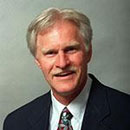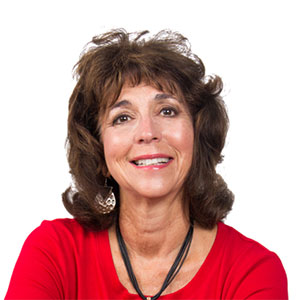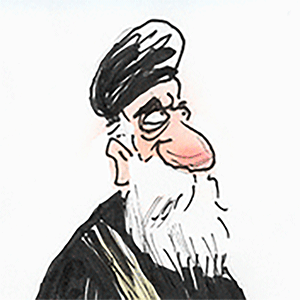Carnival shifts strategy without losing brand identities
Published in Senior Living Features
A small storage room stuffed with torn-up mattresses in the Doral headquarters of Carnival Corp. offers a glimpse into the evolution of the mammoth cruise company.
In an effort to create the most comfortable and durable beds for the operator's 101 ships, a global sourcing manager at the corporate office has ripped open mattresses from across the company's 10 brands to see exactly how they deteriorate.
Using that information and carefully mined customer feedback on beds, Carnival Corp. and its brands are working with manufacturers to come up with ideal cruise ship mattresses -- and then order directly for all the lines, cutting out distributors and getting a better deal for the mass purchase.
"We're going to build the best mattresses at sea," said Josh Leibowitz, hired in September for the new role of chief strategy officer.
The mattress project is just one of nearly 30 initiatives under way across Carnival Corp. that signal a more unified way of doing business at a company that has long fostered a sense of individuality and even competition among its brands. Areas ranging from beverages to brochures to global deployment and shore excursions are under consideration for how they might benefit from a broader look.
More than ever before, Carnival is now embracing "three C's" -- communication, collaboration and cooperation -- between brands, while at the same time digging deeper into market research about customers to ensure that individual lines maintain their identities.
The shift follows a rough patch in Carnival's history due to high-profile disasters that cut into the company's bottom line. The changes are being swept in under the watch of a new CEO, Arnold Donald, and a revamped corporate structure.
"As we went from very, very strong financial performance pre-crisis to what has been weakened with highly publicized incidents, we had that need to become a little bit more focused on efficiencies and where you can do things that don't harm the product and don't in any way, shape or form negatively influence the brand perception," said Stein Kruse, CEO of Holland America Group.
Alan Buckelew, former president and CEO of Princess Cruises who was named the parent company's chief operations officer in November, said the changes have come about because the company needed to do several things: manage costs, take full advantage of scale; raise ticket revenue; understand customers better; and keep brands differentiated.
"To accomplish all this, we needed to really change our business approach and that meant in many ways changing our culture," Buckelew said. "We just can't operate as silos any longer."
HUMBLE BEGINNINGS
Carnival Cruise Lines in Miami with one ship. Fifteen years later, with Arison's son Micky serving as president and CEO of the company, Carnival went public and soon started amassing a portfolio of global lines that would eventually mushroom into the world's largest cruise ship company.
By 2003, when Carnival won a hard-fought battle with competitor Royal Caribbean Cruises to acquire P&O Princess Cruises, the company included brands with long histories such as Cunard Line and the Italian Costa Cruises, as well as former rivals Holland America Line and Princess Cruises. The portfolio also includes luxury Seabourn, P&O Australia and European lines Ibero Cruises, AIDA Cruises and P&O Cruises.
"Micky Arison really respected the people who built these brands over the years," said Mike Driscoll, editor of the trade publication Cruise Week. "They were fairly strong brands in general, well run, but they succeeded by doing business in their own ways and he didn't break it up -- and it worked."
But then, said Driscoll, "it sort of reached a point where it wasn't working as well as it could have."
The past several years have presented challenges that took a toll on the company's finances, from economic recession in the United States and Europe to incidents that damaged the reputation of individual lines.
Carnival shifts course in the wake of a vexing couple of years when high-profile disasters drew negative publicity and annual profits dropped 43 percent. The deadly Costa Concordia shipwreck in Italy killed 32 and forced Costa Cruises to heavily discount sailings in order to fill ships. In February 2013, fire broke out on the Carnival Triumph, leaving the ship without power for days at sea and leading to the now-infamous "poop cruise" nickname.
Last summer, the company announced that it was splitting the chairman and CEO roles; Micky Arison, who had filled both positions, announced he would step back as chief executive while remaining chairman. Although Arison said his departure from the role was not prompted by the incidents, he typically preferred to stay out of the limelight and let individual brands handle their crises publicly.
Longtime Carnival board member Arnold Donald, whose background included executive roles at a chemical company and nonprofit leadership positions, was named CEO.
Chief operating officer Howard Frank, who had served nearly 25 years at the company, announced his retirement late last year; with his departure, Donald rearranged several corporate positions and grouped some operating companies in ways that would make collaboration easier.
"I think there have been a lot of changes in the very top level in the company already," said Teijo Niemelä, editor and publisher of Cruise Business Review. "It's not only the new CEO, it's a new structure. We have seen very powerful figures retiring."
Donald said his 12 years on Carnival's board of directors left him familiar with the company's operating style, but he realized the potential for greater leverage of scale as he spent time with staff at each brand.
Depending on whom he spoke to, Donald said, there was some disconnect between individual brands and the corporate level.
"There was a general feeling of, there needs to be more control in the center," he said. "And the brands, of course, were feeling there was too much control in the center. The main thing was to blow all that up. We have brands and then we have all brands as opposed to corporate. It's one for all and all for one."
David Dingle, CEO of Carnival UK, remembers one of those early town hall sessions.
"Arnold said to everybody, "You only work for one company, and that company is Carnival,' " he recalled. "And of course that, I think, rather came as almost a surprise to some people whose singular allegiances had been to their operating company to the exclusion of everyone else."
Dingle and Buckelew both joined Carnival from P&O Princess, which shared more back-office centralization. Buckelew said he told Donald that he worried the company was missing out on potential by not "managing our brands like a true portfolio."
Donald agreed -- and asked Buckelew to leave his Princess Cruises post in California to help him make that change as COO, a position that would require him to split his time in Miami.
"I said, "I've complained about it for 10 years, so I'd be a hypocrite if I said no,' " Buckelew recalled.
In the months since Donald stepped into the chief executive role, top leaders have already spent significantly more time with each other, starting with a retreat in Asheville, N.C., late last year for the executive team. That was followed by a first-of-its-kind gathering in Miami of about 64 people in senior leadership from the parent company and all the brands.
Also new: Every week, Donald holds a meeting by video conference with some of his top executives from the corporate office and brands around the globe.
"Because we are now sharing all our issues, both day-to-day ones and strategic, it's fascinating to watch the dynamics of the call to see how more and more people are willing to chip in on other people's issues," Dingle said. "You really get this excellent dynamic at the working level."
Donald and others say the company is examining an array of areas where they can operate more efficiently, including crew travel, port agreements, shore excursions, global deployment and orders for items as diverse as beverages and mattresses.
In a conference call with analysts late last year, CFO David Bernstein gave an example of one initiative that has already saved money: commercial printing. He said the company had reduced its use of more than 70 vendors to just a handful, saving millions.
Individual brand CEOs as well as divisional leaders and corporate-level executives are heading up the initiatives with care to avoid another "C" -- central-ization.
"Arnold is meticulous about making sure the word centralization is never used," Dingle said. "It is a case of preserving brand individuality while at the same time supporting those brands and the profitability of those brands by being able to call on corporate leverage."
FULL PARTICIPATION
Andrew Coggins, clinical professor of management at Pace University's Lubin School of Business, said buy-in from the rest of the company's managers is crucial to make such an effort successful.
"As long as you have the support of the rest of the management, you can make the change," he said. "But if there's resistance with the other management, then it can become very difficult."
Donald said his approach is to make sure everyone agrees on what really matters -- which is not necessarily what brand of vodka or tour company a brand uses for a shore excursion.
"People have to take pride in what they do to really be all in on it," he said. "The singular thing we take pride in is exceeding guest expectations."
Donald said Carnival Corp. spends $6 billion a year, not counting payroll and fuel, and figures that even trimming 5 percent of that would save an enormous amount of money. He also believes the company can maximize revenues by sharing business practices across the fleet that have proven successful at one brand.
But he has not yet set a target savings amount, and said he expects the entire process to take three to five years.
That has left some analysts wondering whether they can expect significant improvements to the company's financial performance, especially as Carnival invests more in advertising and enhancing products.
Robin Diedrich, a consumer analyst with Edward Jones, said Carnival has traditionally been focused on keeping its cost growth in check.
"I think it just remains to be seen how much more they can do without losing some of the benefits you get by having folks really focused on one brand," she said.
Matthew Jacob, an analyst at ITG Investment Research, said the timing might be right for Carnival to change some strategies, but cautions that the company must not sacrifice distinctions that make each brand unique.
"I think there are some things they can do to operate more efficiently by combining the management of their brands, but on the other hand they want to make sure that they're careful to not blur the lines too much," he said.
Massive study
The company is determined to make the lines between brands even more clear with the help of a massive new customer segmentation study that will examine those who have cruised in the past as well as the coveted new-to-cruise market.
Donald said that individual brands already had planned their own such studies, but pouring more resources into one will make it "much richer, much deeper."
The study will look not just at demographics, but at psychographics -- a word Donald frequently uses when talking about the business. That means looking at the experience that each brand offers and what segment of the population would prefer that type of vacation.
The results of the study, Donald said, will shape how the company communicates, advertises and refines the onboard experiences from menus to entertainment and spa.
"If we can identify the psychographic mix, it's a much more powerful differentiator," Donald said. "We can get with our travel agents and help guide people to the right experience."
The differences that kept Princess Cruises and Holland America Line fierce competitors for years, as an example, will not be disappearing -- even though both are now part of the same group with a shared leader.
Kruse, who oversees those lines and Seabourn, said Holland America -- where he was previously president and CEO -- and Princess "really were kind of Coke and Pepsi or oil and water."
Both operate heavily in Alaska, though Princess has larger ships that are more geared to families while Holland America is more intimate and refined. The two have coordinated behind the scenes at some level over the years, but not to the extent they are now.
Driscoll, the Cruise Week editor, called the formation of a Holland America Group "huge" for bringing together the two biggest competitors under one leader.
And Kruse said he often hears clues of the "three C's" at work in management meetings at each brand.
"I'm always encouraged when someone says, "I was just working with Princess on this,' or Princess says, "I was working with Holland on that.' "
Driscoll said the collaboration is "probably a few years overdue," but a positive change.
"Everyone hopes it works, because it's obviously for the betterment of Carnival Corp.," he said. "And as we've learned the hard way, that's to the betterment of the whole industry."
(c)2014 The Miami Herald
Visit The Miami Herald at www.miamiherald.com
Distributed by MCT Information Services
(c) The Miami Herald








Comments